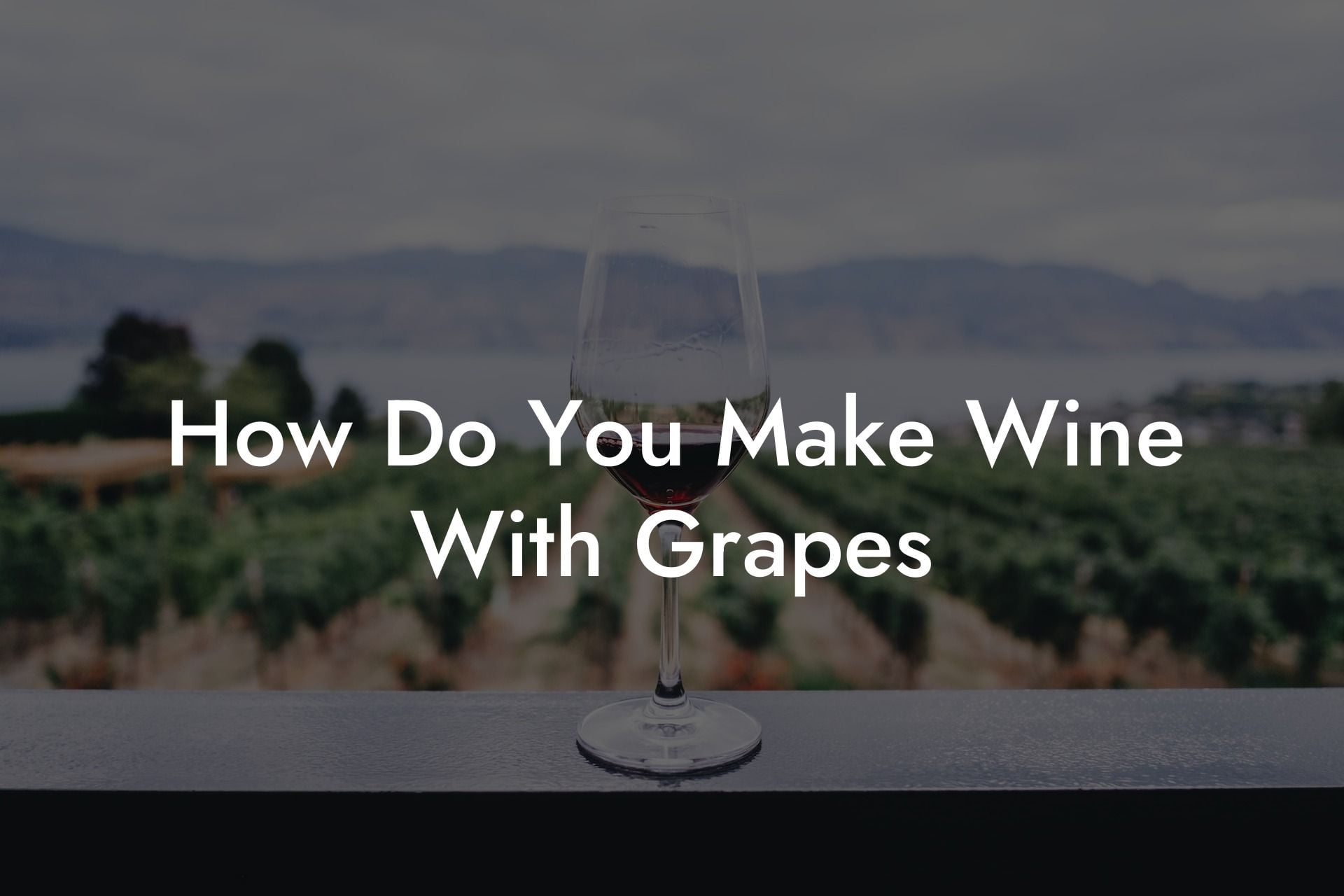Ever wondered how some of your favorite alcoholic beverages are made? As you swirl your glass of fine red or white, do you find yourself pondering the steps and process that go into crafting the perfect wine? If so, you've come to the right place! In this article, we'll explore how to make wine using grapes, providing you with tips and techniques to show off your knowledge during your next wine tasting or live electronic music event. Let Black Wine Club be your guide to understanding the magic behind your favorite libations.
How Do You Make Wine With Grapes Table of Contents
Understanding the Winemaking Process
1. Selecting the Grapes
The first crucial step in winemaking is grape selection. The type of grape ultimately determines the flavor profile, aroma, and color of the finished product. Some popular varieties include:
- Cabernet Sauvignon
- Pinot Noir
- Chardonnay
- Riesling
Grapes must be harvested at the ideal level of ripeness to achieve the desired balance of sugar and acidity in the resulting wine.
Do You Want to Win a Free Bottle of Wine?
Don't miss out on the opportunity to win a free bottle of wine every week.
Enter our weekly prize draw today!
2. Crushing the Grapes
Once the grapes have been harvested, they undergo a crushing process to release the juice. This can be done manually, by stomping on the grapes with clean feet, or through the use of mechanical crushers that press the fruit to extract the juice, skins, seeds, and stems.
For red wines, the crushing process is commonly followed by a period of fermentation with the grape skins still in contact with the juice. This allows for the extraction of tannins, color, and flavor compounds from the skin. For white wines, the grape skins are typically removed before fermentation.
3. Fermentation
At this stage, the magic truly begins, transforming grape juice into wine. Yeast is added to aid in the fermentation process – converting sugar into alcohol and carbon dioxide. This can take anywhere from a few days to several weeks, depending on various factors such as temperature and desired alcohol level.
Fermentation can either be spontaneous, utilizing naturally occurring yeasts found on grape skins, or controlled by adding specific strains of commercial yeast.
4. Aging and Finishing
After fermentation is complete, the wine is then aged to develop its unique character and flavors. This process can take place in oak barrels, stainless steel tanks, or even glass containers. The aging period varies, depending on the type of wine and desired flavor profile – ranging from just a few months to several years.
During this period, winemakers may also utilize various techniques to fine-tune the wine, such as:
- Clarifying and stabilizing the wine by removing sediment and impurities
- Blending the wine with other varietals or batches to achieve the desired flavor profile
- Adjusting the acidity, sugar, or alcohol content to enhance the wine's balance
5. Bottling and Corking
Once the winemaker is satisfied with the wine's flavor and quality, it is time to bottle and cork the finished product. Proper bottling and sealing techniques help protect the wine from oxygen and other damaging factors, ensuring that the flavors continue to develop and mature over time.
How Do You Make Wine With Grapes Example:
Imagine crafting a luscious Cabernet Sauvignon from vine to bottle:
- Harvest perfectly ripe Cabernet Sauvignon grapes
- Crush the grapes, allowing the juice to ferment with the skins
- Add yeast and let the fermentation process work its magic
- Transfer the wine to oak barrels to age, developing the rich, complex flavors of dark fruit, spice, and earthiness
- Clarify and blend the wine, fine-tuning its characteristics
- Bottle and cork the wine, allowing its flavors to continue maturing
Now that you have an understanding of how winemaking works, why not share this knowledge with your fellow Black Wine Club members and friends? You can now appreciate the intricacies and dedication that go into producing that wonderful glass of wine you're about to enjoy. Don't stop here – explore more content on Black Wine Club, discover new varietals, and join us in our passion for all things wine. Cheers to learning something new today!
Do You Want to Win a Free Bottle of Wine?
Don't miss out on the opportunity to win a free bottle of wine every week.
Enter our weekly prize draw today!












